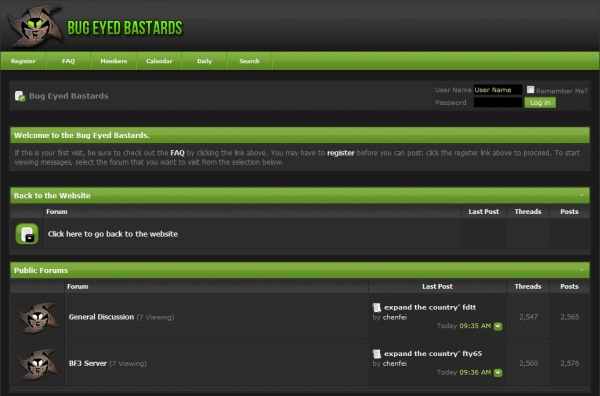
33. Hosting matters!
Here at our company, we take hosting very seriously!
But for the majority of my blogging career, and particularly when I was beginning a blog for the first time, I wasn’t really concerned about hosting or anything server-related.
This abruptly changed one lovely day when I learned that a large spam forum had been functioning on my server for an extended period of time.
My discovery process was amusing as well. A computerized email telling me to “upgrade my vBulletin forum” arrived in my inbox. I was lacking a forum.
The email was actually sent to a random email address on my new domain name, newinternetorder, as it turned out. It was forwarded to my actual email because I had a catch-all option configured there for email. As soon as I started exploring about, I discovered the following:

The forum is that. It’s just there, fully Google indexed, with tons of outbound links utilizing amusing anchor texts like “louis vuitton bags” or other things.
Anyways. To cut a long tale short, it was on this day that I realized the importance of reputable, premium hosting. This type of malware affects servers. It’s not even a WordPress problem.
Please think of yourself. When launching a blog, only work with reliable hosting companies. With an entry-level hosting package, you may acquire something for as little as $3–4 per month, so it isn’t a particularly high cost. I recommend Bluehost. Also, SiteGround. If you have server experience, use Digital Ocean.
34. Do regular content audits
Even while I would prefer it if it weren’t, not everything we publish is evergreen forever. Whatever your niche, there are constantly new advancements, concepts, topics to write about, as well as new advances that connect to your earlier writing.
The truth is that nobody can foresee the future. Therefore, even if you believe that the topic your writing touches on would make it eternal, this is merely a hope and you can never be sure.
Since your site has been online for longer than a year, conducting regular content audits is a wonderful idea. This may not be a concern if you’re just learning how to establish a blog, but it’s still something to keep in mind.
A content audit’s straightforward objective is to determine which of your postings are still pertinent, which require upgrading, which can be completely eliminated, and which can be merged.
The short summary of what Pat Flynn said about this is as follows:
Make a spreadsheet with all of your posts to start (URLs are enough). Separate the spreadsheet into the following three parts:
- “Keep and enhance” refers to articles that may stand on their own merits and are still pertinent; they may require some effort to update or expand (new information, new insights); in other words, we’re making them even better than they are already.
- Smaller posts that can be “consolidated” into a larger one, making the resulting resource considerably more thorough and comprehensive
- “Delete” – posts that can be fully erased if they are currently utterly irrelevant (think old sponsored posts, old news posts, reviews or how-tos relating to things that are no longer around, accidental duplicate content, etc.)
After getting those, you can start working on them in the following order: delete content first, then consolidate, then improve.
When looking through the separate bits of content, you can accomplish the following things:
- Create 301 redirects when combining postings into one or more larger resources.
- Create 410 status codes for items that will never be recovered.
- When editing postings that you’ve chosen to leave online, fix internal links. Make sure they also connect to your more recent content. Internal links from older posts obviously don’t lead to your fresh content because that wasn’t available when you made the links.
- Use H1, H2, and bullet points to format your outdated content.
- Update the images on your most popular posts to make them more social media shareable and compliant with the latest standards for social media images.
- Fix metrics for the Yoast SEO plugin.
- Delete broken links.
- Resolve any inline HTML problems.
- Where appropriate, include content enhancements.
- To make the site as a whole more consistent, update your tags and/or categories.
- If it makes sense, republish previous content. Just make the current date the publication date.
- When you republish, remove comments.
You can only demonstrate that you care about what people see when they visit your website and start consuming a random piece of your content by conducting an audit like this and revitalizing your previous content. It basically sends Google a message that everything on your site is updated and deserving of a ranking. If you’re just starting a blog for the first time, this might not seem like it’s that significant, but it’s actually preferable to implement these strategies right away because that’s how you’ll get the most out of it in the long run.
How frequently should the complete audit be performed? most likely once a year.

35. Update your content, regularly
Although I briefly addressed it above, this merits its own place on the list, so let’s get started.
Essentially, it boils down to this
Unless you make a conscious effort to keep it that way, your material isn’t evergreen.
That must be more than 100 upgrades spread across three years.
This is a dramatic illustration. We don’t regularly update all of our stuff. But the point still stands:
Absolutely, your material ought to be refreshed frequently. New data, information, methods, goods, or whatever else you choose to write about is always being produced. Readers are interested in reading about new information. Google is also interested in your writing about it. The world literally expects you to maintain your information current. If you don’t, your Google rankings are toast.
One of the strategies that virtually every seasoned blogger recommends is updating older blogs. For instance, Neil Patel claims that by revitalizing his older pieces, he received 51% higher traffic over a three-month period.
Here’s what you can do specifically:
- List your top ten most popular posts by visiting Google Analytics.
- An attempt should be made to update those once per month.
- Expand the list to the top 30–50 items once again.
- Try to update those every three to five months.
- To make that easier to manage, make a spreadsheet or a Google Calendar reminder.
36. Easy on the number of WordPress plugins you have
Most likely, none of the 30 plugins that are now active on your site are actually necessary, especially if you’re just establishing a blog.
And although it’s simple to get carried away and get lost in yet another list of the “best 10 WordPress plugins for X,” that’s not the way to, so to speak, live your WordPress life.
To begin with, not all of the minor features you desire call for plugins or add-ons. Many things can be accomplished with short changes or easy WordPress hacks. Additionally, there are some things that, while they may look interesting, aren’t really that useful and are just more “shiny objects” that clutter up your life.
Additionally, not all plugins and add-ons function well together. You may occasionally get into situations where items clash, causing your site to crash (worst case scenario) or your performance to decline noticeably (best case). And let’s not even begin to discuss the issue of many plugins attempting to accomplish the same task (installing W3 Total Cache on top of WP Super Cache, for instance).
Instead, concentrate on the absolute necessities and purchase just one plugin per function. Usually:
- SEO,
- backups,
- caching,
- social media,
- contact forms,
- Jetpack … possibly.








